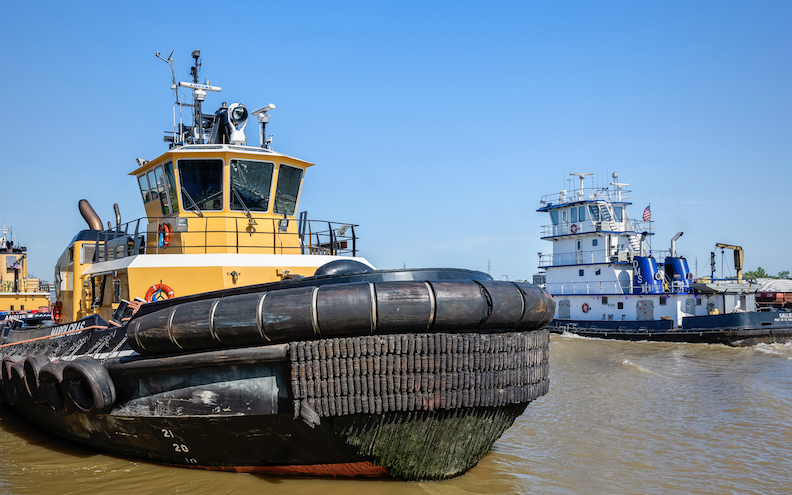The U.S. Army Corps of Engineers has officially declared an end to the severe drought that disrupted barge transportation along the Mississippi River system for more than a year.
Draft restrictions on vessels have been lifted, and dredges no longer operate to maintain nine-foot navigation throughout the Mississippi River. About 589 million tons of cargo transit through more than 4,000 miles of the river’s navigable channels, according to the Corps.
Drought conditions hobbled transportation beginning in September 2022, producing historic low river levels that stranded barges, delayed barge shipments and disrupted grain exports, while causing saltwater from the Gulf of Mexico to move into the Mississippi and contaminate drinking water in places like New Orleans.
The rebound of water levels came too late for the busy grain harvest last fall. Barges had a difficult time meeting the demand from farmers to move crops due to tow restrictions imposed because of low water levels.
“For the U.S.soybean industry, having our supply chain — including the Mississippi River — operate at full throttle during our key September to February export period is critical,” said Mike Steenhoek, executive director of the Soy Transportation Coalition in Ankeny, Iowa. “Unfortunately, that did not occur.”
Although the drought may be officially over, the water level situation is still fragile, Steenhoek noted. “River gauge readings are considerably lower compared to years such as 2018, 2019 and 2020,” he said. “In addition, much ground in the Midwest remains severely dehydrated, which means that it will require significant and persisted precipitation to occur to recharge the soil and provide residual water to maintain water levels on the river.”
A long dry spell could quickly cause water levels to drop again, he said.
Drought recovery depends greatly on the amount of rain that falls this spring and where along the river system the precipitation occurs. The Climate Prediction Center, part of the National Oceanographic and Atmospheric Administration, predicts that from March through May above-average rainfall produced by the El Niño weather pattern will help ease the drought in portions of the Lower and Middle Mississippi River and throughout the Ohio River Basins.
“This is good news as these regions have struggled with drought since last spring and continued improvement is needed before heading into the drier months of late summer and fall,” CPC said in its Seasonal Drought Outlook released Feb. 15.
It will be a different story in the Upper Mississippi basin which is likely to remain in drought as dry conditions are expected to persist and possibly spread there, CPC said.
Another factor affecting water levels is a lack of snow pack in much of the Midwest, which can send water from melted snow into river systems. This has led to several predictions of lower-than-normal chances of spring floods this year, which is the next seasonal event that the barge industry watches closely.
The Corps of Engineers has learned many lessons in managing drought conditions from the experience of the past year and a half, and officials credit continual coordination with local, state and federal partners, the navigation industry and stakeholders in preventing worst impacts from the drought.
“The close collaboration and communication made a difference,” Brig. Gen. Kimberly Peebles, commanding general of the Corps’ Mississippi Valley Division, said in a statement. “Thanks to all involved.”





